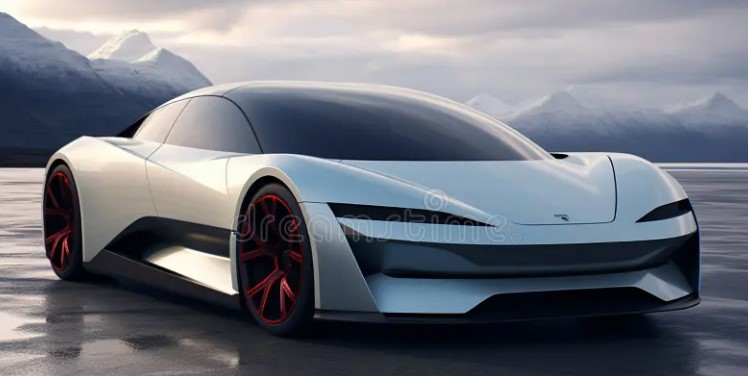Electric Supercars: The Eco-Friendly Future of High Performance
Introduction
The automotive world is undergoing a revolutionary shift. Traditional internal combustion engines (ICE) that have powered the supercar segment for over a century are rapidly being supplemented—and in some cases replaced—by electric powertrains. The rise of electric supercars marks a new chapter in high-performance vehicles, combining eco-friendly technology with jaw-dropping speed and cutting-edge design. This article explores the emergence of electric supercars, the technological innovations driving them, their environmental benefits, and how they are redefining what it means to be fast and luxurious.
Electric vehicles (EVs) have long been associated with practicality, economy, and sustainability. However, the narrative is changing as top manufacturers pour resources into developing electric supercars that not only rival but surpass traditional petrol-powered counterparts in acceleration, handling, and driver engagement. Brands like Rimac, Tesla, Lotus, and Porsche are leading this movement, with more established luxury and exotic car manufacturers joining the race to electrify their offerings.
This article will provide an in-depth look at the technology behind electric supercars, including battery systems, electric motors, and software integration. It will discuss how these vehicles address challenges such as range and charging infrastructure, explore their environmental impact, and highlight iconic models that symbolize the future of eco-friendly high-performance driving. Finally, it will consider what the future holds for electric supercars and their role in a sustainable yet thrilling automotive world.
1. The Rise of Electric Supercars: Changing the Game
The supercar segment has traditionally been synonymous with roaring engines, massive horsepower, and exhilarating soundtracks. The introduction of electric powertrains has disrupted this established identity, presenting a radically different way to achieve superlative performance.
Why Electric?
Electric motors deliver instantaneous torque, allowing electric supercars to achieve lightning-fast acceleration from a standstill—often surpassing ICE-powered cars. Furthermore, the reduced mechanical complexity means fewer moving parts, potentially enhancing reliability and reducing maintenance.
Early electric cars like the Tesla Roadster shattered preconceptions by delivering 0-60 mph times under 2 seconds—numbers that made even the fastest petrol supercars take notice. This performance advantage, combined with zero tailpipe emissions, positions electric supercars as the future leaders in both speed and sustainability.
Industry Momentum
More manufacturers are investing heavily in electrification:
• Rimac Automobili: A Croatian company, Rimac specializes in hyper-advanced electric supercars, boasting models like the Rimac Nevera with 1,914 horsepower and a 0-60 mph time of 1.85 seconds.
• Tesla: Often seen as a pioneer in mass-market EVs, Tesla’s Model S Plaid challenges traditional supercar benchmarks with tri-motor powertrains.
• Porsche: The Porsche Taycan Turbo S combines precision German engineering with electric performance, setting new standards in handling and range.
• Lotus: The upcoming Lotus Evija will deliver almost 2,000 horsepower, heralding the arrival of British electric hypercar engineering.
• Ferrari and McLaren: Both are developing hybrid and fully electric supercars, signaling that the shift is widespread across the industry.
The rapid growth of battery technology, charging infrastructure, and software control systems is accelerating the acceptance and desirability of electric supercars.
2. The Technology Behind Electric Supercars
Electric supercars are the epitome of technological sophistication, blending powerful electric motors, advanced batteries, and smart software.
Electric Motors
Unlike combustion engines, electric motors produce instant torque, enabling immediate acceleration without the delay of revving up. Most electric supercars employ multiple motors (two, three, or four), providing all-wheel drive and precise torque vectoring, enhancing grip and cornering performance.
Examples:
• Rimac Nevera uses four electric motors, one for each wheel, allowing independent control and extreme handling agility.
• Tesla Model S Plaid employs three motors for balanced power distribution and peak acceleration.
Battery Systems
Battery technology is the backbone of electric supercars, determining range, power output, weight, and safety.
• Lithium-ion batteries dominate the market due to their energy density and performance.
• Innovations like solid-state batteries promise higher energy density, faster charging, and improved safety but are still in development.
• Manufacturers design battery packs integrated into the car’s chassis for rigidity and low center of gravity.
Battery cooling systems are essential to maintain performance and safety, especially under high loads.
Charging Technology
Supercars need fast recharging to be practical. High-power DC fast chargers can replenish an 80% charge in under 30 minutes for some models. Wireless and ultra-fast charging are emerging technologies that could further enhance usability.
Software and Controls
Electric supercars rely on sophisticated software to manage power delivery, torque vectoring, regenerative braking, and thermal management.
• Real-time monitoring optimizes performance and battery longevity.
• Advanced driver-assistance systems (ADAS) and dynamic stability controls keep the driver safe and maximize the thrill.
• Over-the-air updates enable continuous improvements and customization.
3. Environmental Impact and Sustainability
One of the strongest appeals of electric supercars is their potential to drastically reduce environmental impact while maintaining exceptional performance.
Zero Tailpipe Emissions
Electric supercars produce no direct CO2 or pollutant emissions, a critical advantage in combating air pollution and climate change.
Lifecycle Considerations
While electric vehicles have a larger carbon footprint during manufacturing, particularly due to battery production, their overall lifecycle emissions are significantly lower than petrol supercars, especially when charged with renewable energy.
Materials and Recycling
Manufacturers increasingly use sustainable materials and are investing in battery recycling programs to minimize environmental harm.
Challenges
• Battery sourcing, including lithium and cobalt mining, has environmental and ethical concerns that the industry is addressing through improved mining practices and material alternatives.
• Electricity generation still depends on the energy mix of each region, affecting the true eco-friendliness of EVs.
Electric supercars encourage the growth of renewable infrastructure and provide a performance-driven motivation to adopt greener technologies.
4. Performance Comparisons: Electric vs. Combustion Supercars
Electric supercars are not just eco-friendly alternatives; they are genuine competitors on the performance front.
Acceleration and Speed
• Instant torque allows electric cars to beat combustion supercars off the line.
• Rimac Nevera’s sub-2-second 0-60 mph time is unmatched by most petrol cars.
• Top speeds of electric supercars often exceed 200 mph, with some models challenging hypercar territory.
Handling and Driveability
• All-wheel drive with torque vectoring offers superior cornering stability.
• Lower center of gravity from heavy battery packs improves handling.
• Regenerative braking systems provide smoother deceleration and energy recapture.
Range and Practicality
Range anxiety remains a concern, but many electric supercars offer 200+ miles per charge, sufficient for spirited driving and track days.
Sound and Experience
A traditional supercar’s roar is a sensory experience many enthusiasts cherish. Electric supercars offer a different kind of thrill, with high-pitched whirs and futuristic soundscapes. Some manufacturers even develop artificial sound generators to enhance the driving experience.
5. Iconic Electric Supercars Leading the Charge
Rimac Nevera
• Power: 1,914 hp
• 0-60 mph: 1.85 seconds
• Range: 340 miles
• Features: Four independent electric motors, advanced torque vectoring, carbon fiber monocoque.
Tesla Model S Plaid
• Power: 1,020 hp
• 0-60 mph: 1.99 seconds
• Range: 390 miles
• Features: Tri-motor AWD, autopilot features, mass-market appeal.
Porsche Taycan Turbo S
• Power: 750 hp
• 0-60 mph: 2.6 seconds
• Range: 200-250 miles
• Features: 800V battery architecture for ultra-fast charging, Porsche’s renowned handling.
Lotus Evija
• Power: 2,000 hp (approximate)
• 0-60 mph: Under 3 seconds (estimated)
• Range: 250 miles (estimated)
• Features: Lightweight carbon fiber construction, cutting-edge electric drivetrain.
Audi RS e-tron GT
• Power: 637 hp
• 0-60 mph: 3.1 seconds
• Range: 238 miles
• Features: Elegant design, advanced aerodynamics, dynamic handling.
These models highlight the diversity and rapid evolution of the electric supercar segment, blending performance, luxury, and green technology.
6. Challenges and Future Outlook
While electric supercars are impressive, challenges remain:
• Battery Technology: Improvements in energy density, weight, charging speed, and cost are critical.
• Infrastructure: Widespread fast-charging networks are essential for convenience.
• Consumer Perception: Enthusiasts accustomed to combustion engines may resist change.
• Cost: Current electric supercars are expensive, limiting access to the technology.
Future Trends
• Solid-state batteries promise breakthroughs in performance and safety.
• Integration of AI and autonomous driving features may redefine supercar usability.
• Renewable energy-powered charging could make electric supercars truly zero-emission.
• Manufacturers are exploring hybrid models as a transitional step.
Conclusion
Electric supercars represent a thrilling convergence of cutting-edge technology and environmental responsibility. They shatter the myth that high performance must come at the cost of sustainability. As battery technologies advance and charging infrastructures expand, these vehicles will become more accessible and practical, further accelerating the shift away from fossil fuels.
The future of the supercar is electric—where mind-blowing acceleration, razor-sharp handling, and luxurious design meet zero emissions and sustainable innovation. For enthusiasts and environmentalists alike, electric supercars offer a compelling vision of what the high-performance automotive world can become: exciting, innovative, and kinder to the planet.
Whether it’s the record-breaking Rimac Nevera, the mass-market Tesla Model S Plaid, or the eagerly awaited Lotus Evija, electric supercars are redefining speed and power for a new generation. This is not just the future of performance—it’s the future of driving itself.



